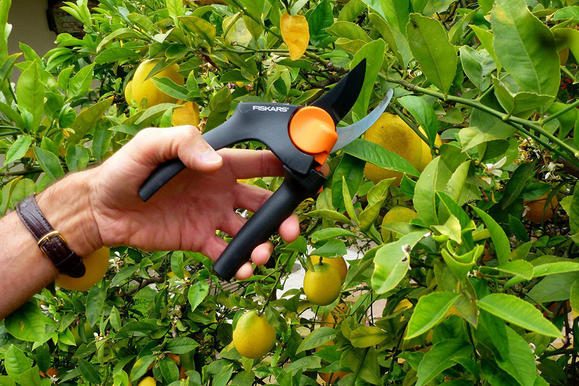How And When To Prune A Lemon Tree

Deciduous fruiting trees should be pruned to enhance branch set, decrease the likelihood of parting from overwhelming heavy fruits, improve air circulation and light accessibility, and to enhance the general quality of the fruits. Like other fruiting trees, pruning lemon trees will give you more beneficial fruits. So, how to prune a lemon tree and when is the best time to prune lemon trees?
Lemon tree pruning
While pruning lemon trees will cause bigger fruits, citrus wood is solid, and in this manner, more averse to break under the heaviness of the crop than other fruiting trees. Citrus trees can also fruit throughout the tree, including shaded spots in your garden, so pruning lemon trees to enhance light accessibility isn’t as important.
All things considered, lemon trees should in any case be pruned once in a while. Youthful trees ought to have any sprouts cut back and any weak limbs pruned out. Grown-up trees ought to likewise have grows frequently pruned out, and in addition any dead wood or crossing limbs. The lemon may likewise need its light infiltration enhanced by pruning the lemon tree back.
When is the best time to prune lemon trees?
It’s important to prune at the right time, lest you risk losing the year’s yield. Lemon tree pruning should occur after it has produced the fall harvest to give it plenty of time to recover prior to the next season’s harvest. If you live in a warm climate, you have a bit more leeway on exactly when to prune; just don’t do it when it’s roasting hot. For everyone else, February through April are the best pruning months. On the whole, however, you can prune any time the tree is producing flowers.
How to prune a lemon tree
RWhen cutting back lemon trees, be sure to use very sharp clean pruning shears or saws, and gloves are helpful to protect you from thorns. While the wood of citrus is very strong, the bark is thin and easy to damage. Always make any pruning cuts with the blade toward the tree to reduce nicking the tree.
Don’t cut the branch flush with the trunk or larger branch. The goal is to preserve the branch collar (the area around the base of a large limb that appears as wrinkled or ridged bark). This area is called the “branch defense zone” and contains cells that activate the callus tissue (wound wood) that grows over a pruning cut and defends the tree against decay.
You should use a three-cut system for any branches that are bigger than an inch to prevent damaging the bark.
- To begin, start with an angled cut 10-12 inches out from the branch union.
- Cut a third of the way through the branch from the other side – an undercut.
- Finally, move a few inches up the length of the branch and cut from above, severing the branch.
Never prune more than one-third of the tree in a year. Begin pruning the lemon in its first or second year to train it to grow how you want it. Trees should be kept around 8-10 feet in height to make it easier to harvest and care for. Don’t be hasty and prune out healthy branches. There is no need.
Pruning container grown lemon trees is much the same as those grown in the orchard. Be judicious with the pruning in either case and only remove branches that are crossing, diseased or dying limbs and spouts.


